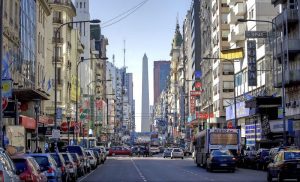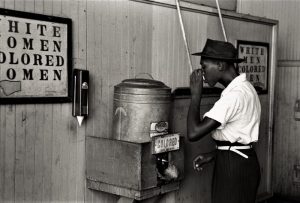Gentrification
Gentrification consists of a transformation process of an urban space that is in a deteriorated state or that is in the process of decaying from the reconstruction or building rehabilitation with greater heights than the pre-existing ones. This causes rents or housing costs to increase in these spaces. This means that the residents who traditionally live in the place abandon it and move to more peripheral places. This is what produces that this "new" space becomes occupied by social classes with a greater economic capacity that allows them to contribute with new costs.
What is gentrification?
Gentrification is the process by which the original population of a sector or neighborhood, generally central and popular, is progressively displaced by another of a higher purchasing power. It is also used to analyze tourist and trade potential situations in a given area.
This process has a great and special relevance, mainly during the last years in capitalist countries and mainly in cities with important tourist potential and economic relevance. Sometimes this process can also be used to analyze this situation with respect to commercial uses or services. For example, construction of shopping centers or stores belonging to large chains replacing small businesses.
Origin of the gentrification
The English word gentrification derives from the noun gentry which refers to the high bourgeoisie, small aristocracy, either family or wealthy people. It is a term that has also been adapted to French (gentrification), German (Gentrifizierung) and Portuguese (gentrificação). The term gentrification was first used by sociologist Ruth Glass in 1964, when she devoted herself to studying social changes taking place in London in comparison to the rest of the territory.
Stages
Gentrification is based on three phases in the life cycle of a sector catalogued as urban. This cycle has been led by industrial neighborhoods in developing and expanding cities. The first phase of the process is known as birth and is based on its configuration as workforce in a modern capitalist city. Industrialization is responsible for forming a new urban center configuration with the presence of workers and productive activities and at the same time, creates industrial settlements that attract important immigration groups from rural areas. This, in turn, causes people who come to work to look for a place to live near their work. The second phase is the sector’s abandonment. For the process to occur, the place must first suffer a devaluation generated mainly by decapitalization of the area. As the decadence of the neighborhood advances, new elements are introduced in the zone attracted by low incomes of the ground. The last phase is known as revaluation and consists of revaluating the centers of the developed cities that become the main base of the economic development of the system.
Gentrification types
The types of gentrification are innumerable. This process has special relevance in recent years in capitalist countries and mainly in cities with important tourist potential and economic relevance. Sometimes, it is also used to build shopping malls or shops. The phenomenon is diverse and has taken many forms. A working-class neighborhood could become an high-class neighborhood, a middle-class neighborhood with raw materials for design and art could also change dramatically. The neighborhood that has been degraded at times becomes a historic site fully dedicated to tourism. And the working-class area, full of abandoned premises, will be a wealthy class residential area.
Causes of the gentrification
Gentrification was caused when a group of people with a certain economic level discovered a small neighborhood of poor people, which, despite being abandoned and depreciated economically and commercially, offered quality. These people decided to settle in the place taking advantage of the prices that flow in the area.
Effects
Gentrification brings with its installation process a residential migration process from the original resident population in the urban center to the more peripheral areas, which results in changes in the social composition of the area and its residents, and a change in the nature and tenure regimes, whether owned or rented. The working class cannot live in these places and they have to go out and look for new housing as prices rise considerably.
Consequences of the gentrification
Among the main consequences we have to say that the price of housing increases considerably, making most of the people who live in the place cannot afford it. There are enormous inequalities by social class and territorial inequality. This progressive expulsion of the population, coupled with the inability of the evicted or emancipated youths from the neighborhood to pay for housing there, as a result of the revaluation and increase in prices related to housing. There is also a reduction in housing occupancy rates.
Examples of the gentrification
Argentina
Buenos Aires is one of the largest agglomerations in Latin America, presents significant urban transformations from the neoliberal economic restructuring, was historically shaped as a European city, ie with a “compact” growth. There are three cases of recent real estate investment in central areas, with different strategies on the part of the local government as they are:
1) Transformations in the old market “El Abasto“.
2) Diverse investments in the “Palermo” neighborhood.
3) A strategy with shared responsibility between local and federal government as was the case of the “Puerto Madero” project, to show some public strategies which seek to attract private investment generating gentrification processes.
Spain
In Madrid it happens, has happened or can happen in neighborhoods such as Malasaña, Lavapiés, Chueca and Tetuán. And it generates fervent followers and a lot of criticism. A neighborhood populated by attractive people, full of a hectic social and cultural life, modern shops, safe streets, designer bars and many gin-tonics, all this where before there was an abandoned place and grey sick of drugs and prostitution.
London
Dalston is a typical example of gentrification. Dalston is London’s old “new fashionable neighborhood” and one of those examples of gentrification. In 2009 Vogue elevated it to the category of ‘coolest area in London’ and, since then, hordes of modern establishments are placed along the length and breadth of its organic shops, prices are rising more and more and new commercial premises are opening their doors more and more. It is now the ‘new fashionable neighborhood’.
How to cite this article?
Briceño V., Gabriela. (2019). Gentrification. Recovered on 4 January, 2025, de Euston96: https://www.euston96.com/en/gentrification/










